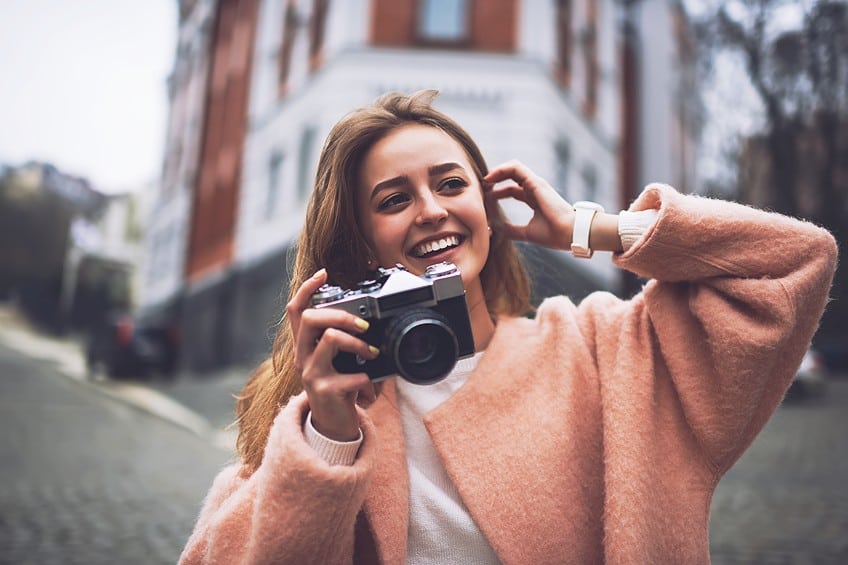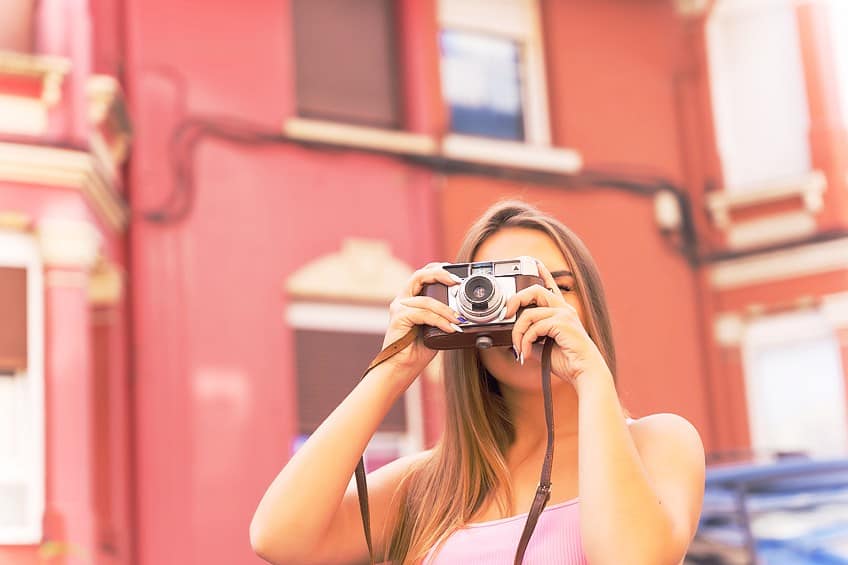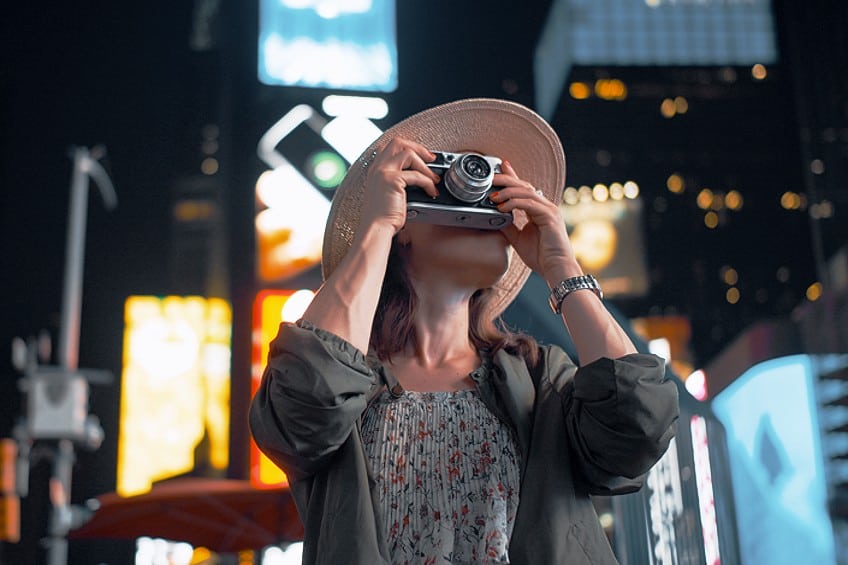Famous Street Photographers – Capturing Life Unscripted
From sleek cityscapes and emotional street portraits to candid snapshots of everyday urban realities, street photographers have been bringing glimpses and stories of cities from around the world that highlight the beauty of humanity to the fine art universe. In this article, we will introduce you to the world’s most famous street photographers, whose contributions to street photography have left a unique footprint in the industry. We will also touch on the difference between street photography and documentary photography, as well as some of the most famous street photographs taken by these incredible artists. Read on for more about these remarkable figures!
Contents
- 1 An Introduction to Street Photography: Exploring the Urban Canvas
- 2 The Top 10 Most Famous Street Photographers
- 2.1 Alfred Stieglitz (1864 – 1946)
- 2.2 Lewis Hine (1874 – 1940)
- 2.3 Berenice Abbott (1898 – 1991)
- 2.4 Alfred Eisenstaedt (1898 – 1995)
- 2.5 Brassaï (1899 – 1984)
- 2.6 Ernst Haas (1912 – 1986)
- 2.7 Helen Levitt (1913 – 2009)
- 2.8 Inge Morath (1923 – 2002)
- 2.9 William John Cunningham Jr. (1929 – 2016)
- 2.10 Daidō Moriyama (1938 – Present)
- 3 Frequently Asked Questions
An Introduction to Street Photography: Exploring the Urban Canvas
What is street photography? And what is the difference between street photography and the art of documentary photography? These are just a few questions you may have when it comes to understanding the possibilities of street photography and its significance in the broader fine art world. Street photography is commonly defined as a category of photography that focuses on capturing scenes from everyday life within the context of public spaces. This means that the public space can encompass rural and urban environments while capturing subjects, objects, and individuals candidly, sometimes without the knowledge of the individuals involved in the image.
It is important to note that the rules for street photography and photographing individuals without their permission in public spaces are limited to the environment being a public space and cannot qualify as street photography if it has been practiced in a private space. One of the best ways to avoid incurring issues related to permissions and authorizations for photographing in a specific location would be to first review the laws of the area that you plan on photographing. As a fine art street photographer, being aware of your location and the issues of privacy and consent is one of the most important factors to consider when practicing photography in public spaces and around private areas. Understanding the ethics of photography, in general, is vital to establishing a reputable name for yourself as a fine art street photographer.
What Makes Street Photography a Fine Art?
Street photography first emerged around the 19th century alongside the development of the medium itself. Popular photographers such as Henri Cartier-Bresson also practiced early street photography characterized by candid images of individuals he knew and saw on the street. Street photography was only beginning to gain traction in society as fine art in the 20th century with artists such as Robert Frank and Garry Winogrand whose works are recognized as pioneering examples of street photography.
What makes street photography a fine art is more than its ability to candidly capture the environment and the micro-interactions of people within it.
The appeal of street photography comes from the seemingly “natural” and “raw” visual languages that emerge from candid imagery, often taken in the “decisive moment” of the photographer. Street photographs are admired for their nature of highlighting the beauty of environments and the interactions in them through their “unplanned” and “undisturbed” nature, which results in unique imagery of moments that would otherwise not be repeated or seen again in the same sequence, manner, or context.
Artists of the 20th century such as Diane Arbus and Lee Friedlander also helped establish street photography in the fine art sphere by employing narrative techniques using imagery that tells a story and helps build cohesive narratives around the context of the image, sequence of events, individuals of the image, and time at which the image was taken. These are all factors contributing to the artistic value of street photograph artworks. Seminal works in the field such as a photo book called The Americans (1958) by street photographer Robert Frank were among the best examples of street photography artwork from the 20th century that had a significant impact on the definition of fine art street photography and its establishment as an art form.
Street Photography vs. Documentary Photography
While there are overlaps between the genres of street photography and documentary photography, it is a fact that both practices are a form of photography that focuses on capturing the environment and specific realities as they appear. However, the difference lies in the approach and aim of each practice. In street photography, the artist emphasizes the art of spontaneity to capture scenes from the urban environment as they occur at the moment. The responsibility of the street photographer is to be prepared to shoot an image and is less focused on the importance of capturing a technically picture-perfect image.
Artists practicing street photography capture fleeting moments and respond to the event by photographing it as best as they can at the moment that it transpires.
While such images can relay messages about a particular narrative or event, as seen in documentary photography, they differ from the latter in that they are often unplanned and not long-term projects. Documentary photography on the other hand aims to capture a specific story and can be used in photojournalism to record images from events.
This type of photography is premeditated and sometimes requires research, planning, and supporting texts to accompany the series or image, such that all visual information is a record of what transpires before the photographer. Documentary photographers often focus on socio-political experiences and use photography as a medium for relaying potent stories, which can conceptually overlap with fine art practices.
The Top 10 Most Famous Street Photographers
One of the unique aspects of candid street photography in fine art is its ability to capture and evoke emotion. Below, we will explore the top 10 most famous street photographers of all time. While you are at it, see how many iconic street photographers you can guess beforehand!
Alfred Stieglitz (1864 – 1946)
| Name | Alfred Stieglitz |
| Date of Birth | 1 January 1864 |
| Date of Death | 13 July 1946 |
| Nationality | American |
| Associated Movements, Themes, and Styles | American Modernism, street photography, Modern art, urban landscapes, and portraiture |
| Medium | Photography |
| Famous Artworks | ● The Terminal, New York (1892) ● The Terminal (1893) ● Fifth Avenue, Winter (1893): ● The Hand of Man (1902) ● The Steerage (1907) |
Alfred Stieglitz is a name recognized by all in the photography industry. Stieglitz was one of the first influential street photographers who championed American Modernism in the 20th century alongside his wife Georgia O’Keeffe, who featured in many of his portraiture photographs. Stieglitz’s dedication to capturing the rapid change of Modern America can be seen in many of his iconic street photographs, including his 1910 series Old and New New York and New York, From The Shelton (1935), which capture the period of architectural and technological change in New York City.

As the founder of the Photo-Secession movement, Alfred Stieglitz was deeply invested in keeping up with the technical developments and trends in Modern photography, which was reflected strongly in his artistic street photo prints that demonstrated his eye for meticulous composition.
Lewis Hine (1874 – 1940)
| Name | Lewis Wickes Hine |
| Date of Birth | 26 September 1874 |
| Date of Death | 3 November 1940 |
| Nationality | American |
| Associated Movements, Themes, and Styles | Social Realism, early Modern art, street photography, portraiture, child labor, and sociology |
| Medium | Photography |
| Famous Artworks | ● Italian Family, Ellis Island (1905) ● Sadie Pfeifer, a Cotton Mill Spinner, Lancaster, South Carolina (1908) ● Newsies at Skeeter’s Branch, St. Louis, Missouri (1910) ● Powerhouse Mechanic Working on Steam Pump (1920) ● Empire State Building, New York City (1931) |
Social justice activist Lewis Hine was a pioneering street photographer who was best known for his legacy of using photography to bring light to child labor issues in the United States. Through his photography, Hine was able to influence social reform through a change in America’s labor laws, which inspired many after his generation to take up documentary photography. Hine’s interest in photography began with his passion for sociology, which led him to start documenting images of immigrants, child laborers, and the working class of America.
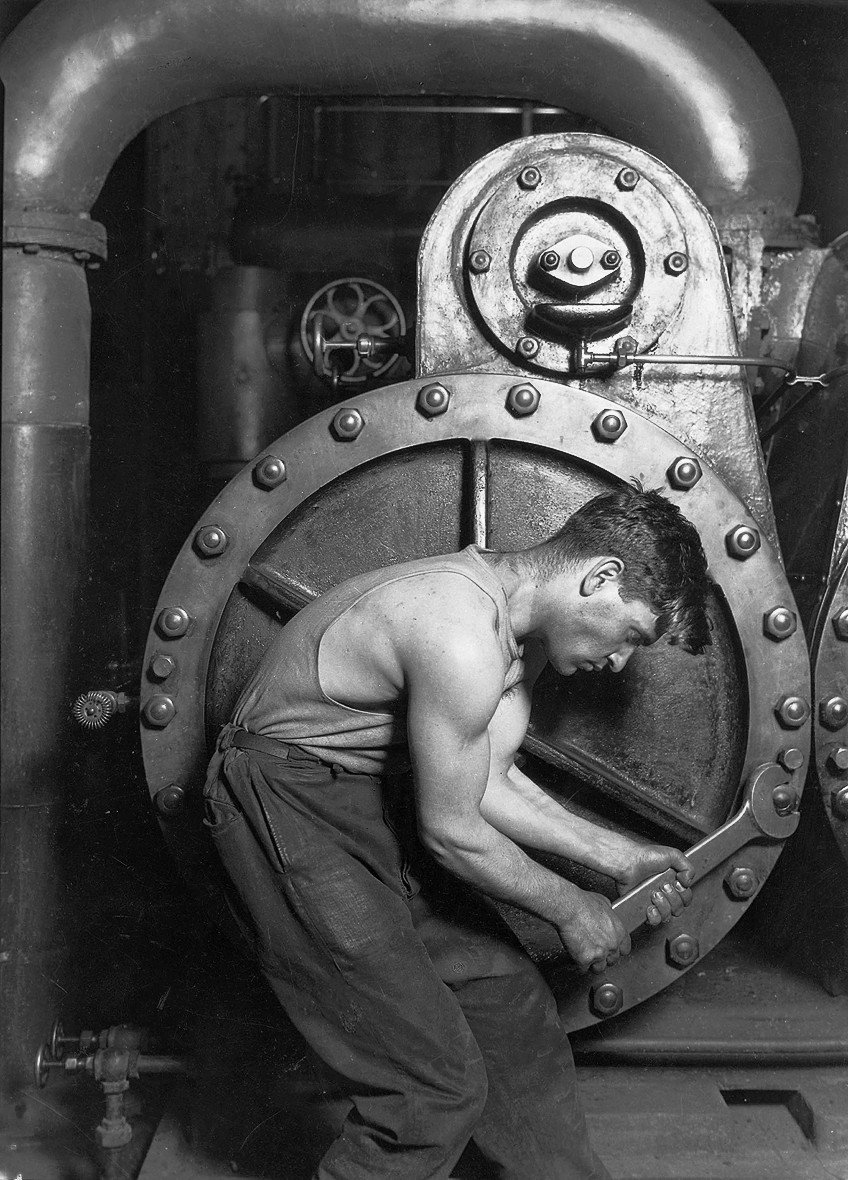
His images are incredibly moving and are physical evidence of his dedication to participating as an artist and sociologist, to bring about widespread social reform. Sadie Pfeifer, a Cotton Mill Spinner, in Lancaster, South Carolina (1908) is considered to be his most famous image, which helped spread awareness of child labor.
Berenice Abbott (1898 – 1991)
| Name | Berenice Alice Abbott |
| Date of Birth | 17 July 1898 |
| Date of Death | 9 December 1991 |
| Nationality | American |
| Associated Movements, Themes, and Styles | Social Realism, Modern art, American Modernism, and street photography |
| Medium | Photography |
| Famous Artworks | ● Night View, New York (1932) ● Newsstand, Southwest Corner of 32nd Street and Third Avenue (1935) ● Changing New York (1935 – 1938) ● El (1936) ● Flatiron Building (1938) |
Berenice Abbott was among one of the best street photographers of the 20th century whose black-and-white photographs illuminated the essence of New York City during the 1930s through street photographs featuring the city’s architecture and its interesting people. Abbott’s street photography style was defined by her ability to identify and capture candid moments while using stark contrasts to create bold compositions.
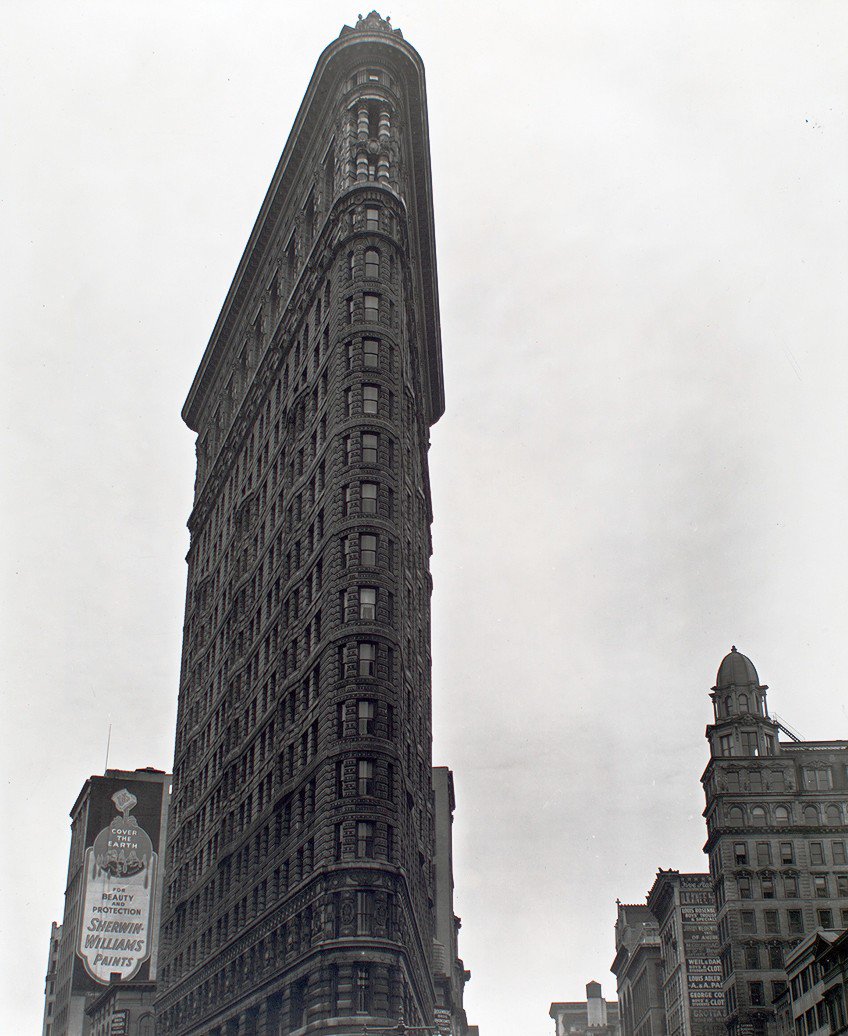
Abbott’s work remains an important part of street photography history that continues to influence Contemporary photographers today. Among her best works were images such as Changing New York (1935-1938) and Flatiron Building (1938).
Alfred Eisenstaedt (1898 – 1995)
| Name | Alfred Eisenstaedt |
| Date of Birth | 6 December 1898 |
| Date of Death | 23 August 1995 |
| Nationality | German-American |
| Associated Movements, Themes, and Styles | Modern art, Modern photography, photojournalism, and street photography |
| Medium | Photography |
| Famous Artworks | ● Children at a Puppet Theater (1933) ● Ballerina on the Roof (1934) ● Waitress at the Brass Rail (1942) ● Sailors on Board a Ship (1943) ● V-J Day in Times Square (1945) |
Photojournalist and famed photographer of Life magazine, Alfred Eisenstaedt, was among the leading street photographers of the 20th century whose rise to fame was marked by the famous American modern-day image of “the kiss”, V-J Day in Times Square (1945). What made Eisenstaedt one of the best street photographers of his time was his ability to grab an image off the street in perfect timing as seen in V-J Day in Times Square. His approach to street photography was accompanied by his trustworthy Leica camera, which helped him capture many striking moments and communicate the essence of an event as more than a documentation of it.

Eisenstaedt also photographed portraits of prominent figures such as John F. Kennedy and Winston Churchill among many other high-profile personas and created more than 2,500 street photographs for Life magazine during his career. Eisenstaedt also demonstrated a remarkable quality of child-like vision in his practice that can be seen in his close connection to his sitters, who all seemed comfortable in his presence.
Brassaï (1899 – 1984)
| Name | Gyula Halász (professionally known as Brassaï) |
| Date of Birth | 9 September 1899 |
| Date of Death | 8 July 1984 |
| Nationality | Hungarian–French |
| Associated Movements, Themes, and Styles | Surrealism, street photography, and Modern art |
| Medium | Photography, sculpture, filmmaking, and writing |
| Famous Artworks | ● Prostitute near the Place d’Italie, Paris (c. 1930s) ● Bijou, rue de Lappe, Paris (1932) ● Rue de Rivoli, Paris (1932) ● Le Couple (1932) ● The Steps of Montmartre, Paris (1936) |
Gyula Halász, better known by his professional name Brassaï, was a popular Hungarian–French street photographer who was best remembered for his imagery of Parisian nightlife and street culture. His images are described as gritty, mysterious, and vibrant, as he captured the many diverse communities and subcultures of the early 20th century. Brassaï’s street photographs make use of high contrast elements for that added mystery and cinematic aesthetic, which makes his work appear iconic.
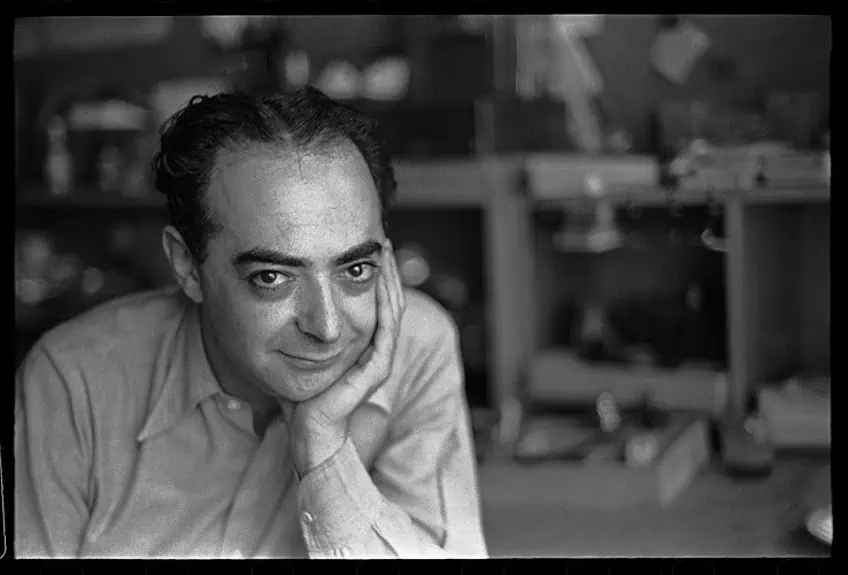
An admirable feature of his work is his mastery over shadow and light, which enabled him to capture images that illustrated a strong contrast between the environment and the subject. This also elevated his images since it provided a sense of tension and drama while introducing a candid moment of the authenticity of the individual and their context. Brassaï is credited with being one of the first pioneers of 1920s Parisian nightlife photography, providing many iconic scenes from the opera, ballet, and Parisian society.
Ernst Haas (1912 – 1986)
| Name | Ernst Haas |
| Date of Birth | 2 March 1921 |
| Date of Death | 12 September 1986 |
| Nationality | Austrian-American |
| Associated Movements, Themes, and Styles | Modern art, American Modernism, street photography, and photojournalism |
| Medium | Photography |
| Famous Artworks | ● Taxi, New York (1952) ● Venice (1954) ● New York City (1962) ● Chicago, State Street (1970) ● Graffiti, New York City (1973) |
Globally-renowned street photographer Ernst Haas is a famous Austrian-American photographer whose three decades of contribution to photography have demonstrated the true essence of street photography. Haas’ approach to photography was defined by his expert eye for color, shadow, and light to seize the still moments of emotion and spontaneity. Ernst Haas was also considered to be a master of composition who combined various framing techniques and sleek angles to create visually compelling images from everyday life in the city.
His choice of subjects ranged from ordinary people and cityscapes to abstract forms, all of which he managed to capture beautifully using color photography. Haas’ contribution to street photography has left a resounding impact on many photographers and encouraged them to push the boundaries of photography to uncover new ways of seeing the world around them.
Helen Levitt (1913 – 2009)
| Name | Helen Levitt |
| Date of Birth | 31 August 1913 |
| Date of Death | 29 March 2009 |
| Nationality | American |
| Associated Movements, Themes, and Styles | Street photography, Modern art, and Contemporary art |
| Medium | Photography |
| Famous Artworks | ● New York (Two Boys on Steps) (1935 – 1945) ● New York City (1938) ● New York (c. 1940) ● Mexico City (two children with dog) (1941) ● Untitled (New York) (1942) ● New York City (Children with a broken mirror) (1942) ● Untitled, New York (1972) |
Helen Levitt was an iconic figure of Modern American street photography and was renowned for her exceptional street portraiture photography. Levitt was born to Russian-Jewish immigrants and began working as a commercial photographer after leaving high school. As a commercial photographer, she honed her film processing skills and learned more about photography as fine art from other iconic masters such as Walker Evans and Henri Cartier-Bresson. Levitt specialized in street portraiture photography and captured the lives of women, minority communities, and children on the streets of New York City using her 35-millimeter camera.
Levitt‘s work was also described by The New York Times as “moments of surpassing lyricism, mystery, and quiet drama”, which is an incredibly flattering compliment toward her eye for narrating the streets of 1940s New York. By 1939, her photographs were exhibited at the Museum of Modern Art’s inaugural photography department show where she gained recognition for her images of children trick-or-treating. She was also awarded two Guggenheim Fellowships with many of her works acquired by institutions such as The Museum of Modern Art, the National Gallery of Art, and the Art Institute of Chicago.
Inge Morath (1923 – 2002)
| Name | Ingeborg Hermine Morath |
| Date of Birth | 27 May 1923 |
| Date of Death | 30 January 2002 |
| Nationality | Austrian |
| Associated Movements, Themes, and Styles | Street photography, Modern art, and portraiture |
| Medium | Photography |
| Famous Artworks | ● A Couple in a Passing Car, London (1954) ● London (1954) ● Piccadilly Circus, London (1954) ● New York City (1958) ● Belfast, Northern Ireland (1961) |
Inge Morath was one of the most impressive street photographers of the late 20th century whose unique approach to street photography was best demonstrated in her portraiture of cultural icons. Her diverse educational background and expertise in editorial translation and interpretation are reflected in her images through the comfort expressed by her sitters, owing to her ability to establish trust with her sitters.
One of the most admirable aspects of her work was her sense of “stealth” in being able to photograph people without causing much disturbance or displaying planning. Her work in black and white photography is also remarkable and truly worth celebrating for its warm nature. Morath’s work was published in many publications, including Life, Saturday Evening Post, Holiday, and Paris-Match. Her contributions to street portraiture photography were best captured in Inge Morath (1975) and Portraits by Inge Morath (1986).
William John Cunningham Jr. (1929 – 2016)
| Name | William John Cunningham Jr. |
| Date of Birth | 13 March 1929 |
| Date of Death | 25 June 2016 |
| Nationality | American |
| Associated Movements, Themes, and Styles | Street photography, Contemporary art, and fashion photography |
| Medium | Photography |
| Famous Artworks | ● Bergdorf Goodman, Women in Fur, New York City (c. 1970s) ● Bill Cunningham’s Archive, The New York Times (1978) ● The High Life: The Best Street Fashion from Paris and New York (1983) ● Anna Wintour and André Leon Talley at Paris Fashion Week (2006) ● Bicycle Diaries: A Candid Shot of a Young Cyclist (2008) |
William John Cunningham Jr., better recognized as Bill Cunningham, was one of the most loved American street photographers of the 21st century. Cunningham was best known for his street portraiture photography and his candid eye for capturing the best of street fashion. Cunningham began his career in street photography in the 1940s after he relocated to New York City to pursue his passion for fashion.
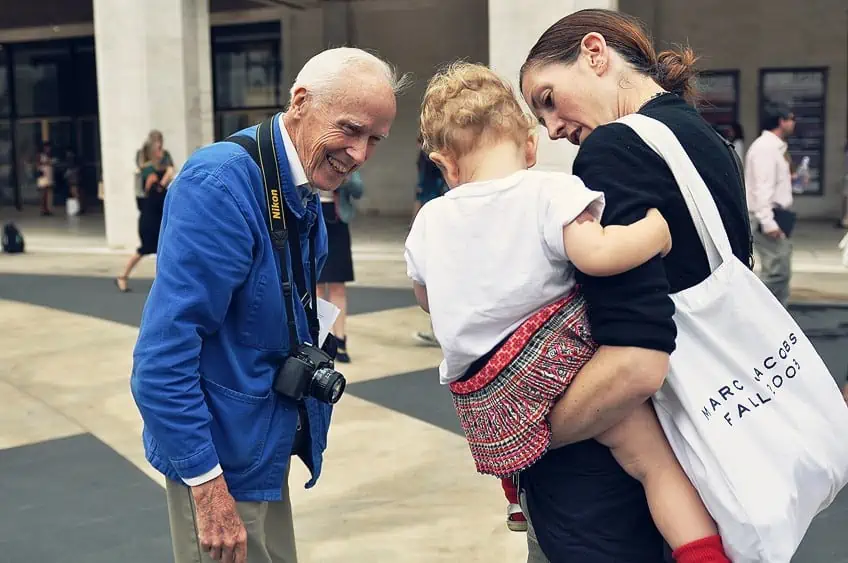
His first stepping stone was a career as a hat maker and thereafter he moved into fashion journalism, providing images for The New York Times and Women’s Wear Daily. Soon, he became one of the most iconic urban photographers of his time, photographing candid moments of people on the street that expressed personal expression and an interest in the fashion world. Cunningham was also famous for photographing in black and white film, which provided a timeless quality to his urban photography.
Daidō Moriyama (1938 – Present)
| Name | Daidō Moriyama |
| Date of Birth | 10 October 1938 |
| Date of Death | Present |
| Nationality | Japanese |
| Associated Movements, Themes, and Styles | Street photography, Modern art, Contemporary art, and portraiture |
| Medium | Photography |
| Famous Artworks | ● Lips (c. the 1970s) ● Stray Dog (1971) ● Hunter (1972) ● Farewell Photography (1972) ● Tights in Shimotakaido (1987) |
Renowned Japanese street photographer Daidō Moriyama is among the best street photographers of the current period and is also famous for his confrontational approach to capturing the rawness of individuals and the gritty personalities of the street. Moriyama’s street photography style is also inspired by the development and change in Japanese society since the end of the second World War.

His images are often shot in black and white and illustrate a sense of immediacy and intimacy that begs the viewer to look at his images in all their detail and acknowledge their presence. Moriyama’s street photography also encapsulates the Japanese philosophy of wabi-sabi, which focuses on highlighting the beauty in imperfect subjects. In his approach, Moriyama celebrates the discarded through a diaristic style as he wanders the streets of Japan to demonstrate its diversity. Some of his best street photography artworks include Stray Dog (1971) and Tights in Shimotakaido (1987).
Street photography is a highly impactful and vital form of fine art. The best street photographers have managed to capture fleeting and candid moments of urban life that convey powerful stories and messages through their lenses. The best street photography is not only unplanned, but also provides unique insight into the urban landscape, unraveling the joys, complexities, and beauty of everyday life. Urban photographers have also demonstrated their ability to highlight the beauty in the mundane – thus making the ordinary seem extraordinary!
Frequently Asked Questions
What Is Street Photography?
Street photography can be understood as a type of photography focusing on candid and unplanned scenes in public places. One of the main aims of street photography is to highlight the finer details of everyday life and capture the beauty of the ordinary. Common subjects found in street photography include images of strangers, photographed without the individual’s knowledge.
What Is the Difference Between Documentary Photography and Street Photography?
Documentary photography is focused on capturing real-life events or scenes in a journalistic manner. Documentary photography is often photographed as objective and involves narrative or storytelling to present a situation to the public. On the other hand, street photography is practiced with spontaneity in mind, in public places, and without a specific narrative. In street photography, the artist acts as the observer to photograph the essence of everyday life in public spaces.
Who Are the Pioneering Artists of Street Photography?
The pioneering artists of street photography include photographers such as Henri Cartier-Bresson, Diane Arbus, Garry Winogrand, Vivian Maier, and Robert Frank, among many other practitioners of early fine art street photography.
Jordan Anthony is a Cape Town-based film photographer, curator, and arts writer. She holds a Bachelor of Art in Fine Arts from the University of the Witwatersrand, Johannesburg, where she explored themes like healing, identity, dreams, and intuitive creation in her Contemporary art practice. Jordan has collaborated with various local art institutions, including the KZNSA Gallery in Durban, the Turbine Art Fair, and the Wits Art Museum. Her photography focuses on abstract color manipulations, portraiture, candid shots, and urban landscapes. She’s intrigued by philosophy, memory, and esotericism, drawing inspiration from Surrealism, Fluxus, and ancient civilizations, as well as childhood influences and found objects. Jordan is working for artfilemagazine since 2022 and writes blog posts about art history and photography.
Learn more about Jordan Anthony and about us.
Cite this Article
Jordan, Anthony, “Famous Street Photographers – Capturing Life Unscripted.” artfilemagazine – Your Online Art Source. October 23, 2023. URL: https://artfilemagazine.com/famous-street-photographers/
Anthony, J. (2023, 23 October). Famous Street Photographers – Capturing Life Unscripted. artfilemagazine – Your Online Art Source. https://artfilemagazine.com/famous-street-photographers/
Anthony, Jordan. “Famous Street Photographers – Capturing Life Unscripted.” artfilemagazine – Your Online Art Source, October 23, 2023. https://artfilemagazine.com/famous-street-photographers/.


